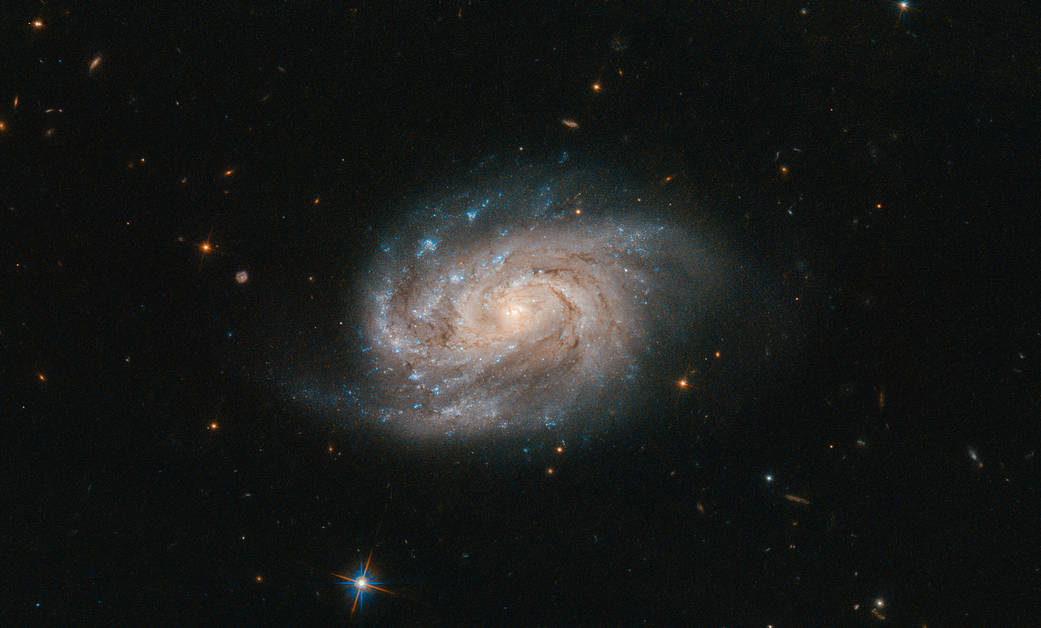This bright, somewhat blob-like object — seen in this image taken by the NASA/ESA Hubble Space Telescope — is a galaxy named NGC 1803. It is about 200 million light-years away, in the southern constellation of Pictor (the Painter’s Easel).
NGC 1803 was discovered in 1834 by astronomer John Herschel. Herschel is a big name in astronomy; John, his father William and his aunt Caroline all made huge contributions to the field, and their legacies remain today. William systematically cataloged many of the objects he viewed in the night sky, named many moons in the solar system, discovered infrared radiation and more. Caroline discovered several comets and nebulas. John took this aforementioned catalog of night-sky objects and reworked and expanded it into his General Catalogue of Nebulae and Clusters of Stars. This was the basis for the cataloging system still used today by astronomers, John Louis Emil Dreyer’s New General Catalogue of Nebulae and Clusters of Stars, or the New General Catalogue for short.
This gives rise to the NGC names assigned to a vast number of galaxies — including NGC 1803. This galaxy is one of a galactic pair. It was described by Dreyer as being “faint, small, [and] round,” and located near to a very bright star to the southeast. This star is in fact the nebulous lenticular galaxy PGC 16720 — not visible in this image.
Text credit: ESA (European Space Agency)
Image credit: ESA/Hubble & NASA, A. Bellini et al.
在这张由NASA/ESA哈勃太空望远镜拍摄的照片中,我们看到的这个明亮的、有点像团的物体是一个名为NGC 1803的星系。它距离我们约2亿光年,位于南方的Pictor星座(画家的画架)。
NGC 1803是1834年由天文学家约翰·赫歇尔发现的。赫歇尔在天文学中是个大人物;约翰,他的父亲威廉和他的阿姨卡洛琳都为这个领域做出了巨大的贡献,他们的遗产一直延续到今天。威廉系统地记录了他在夜空中看到的许多物体,为太阳系中的许多卫星命名,发现了红外辐射等等。卡洛琳发现了几颗彗星和星云。约翰把前面提到的夜空天体目录进行了修改,并将其扩展到他的星云和星团总目录中。这是天文学家至今仍在使用的编目系统的基础,约翰·路易斯·埃米尔·德雷尔的《星云和星团新总目录》,简称《新总目录》。
这产生了分配给包括NGC 1803在内的众多星系的NGC名称。这个星系是一对星系中的一个。德雷尔将它描述为“微弱,小而圆”,位于东南方,靠近一颗非常明亮的恒星。这颗恒星实际上是星云状透镜星系PGC 16720——在这张图片中不可见。
文字来源: ESA (European Space Agency)
影像来源: ESA/Hubble & NASA, A. Bellini et al.







